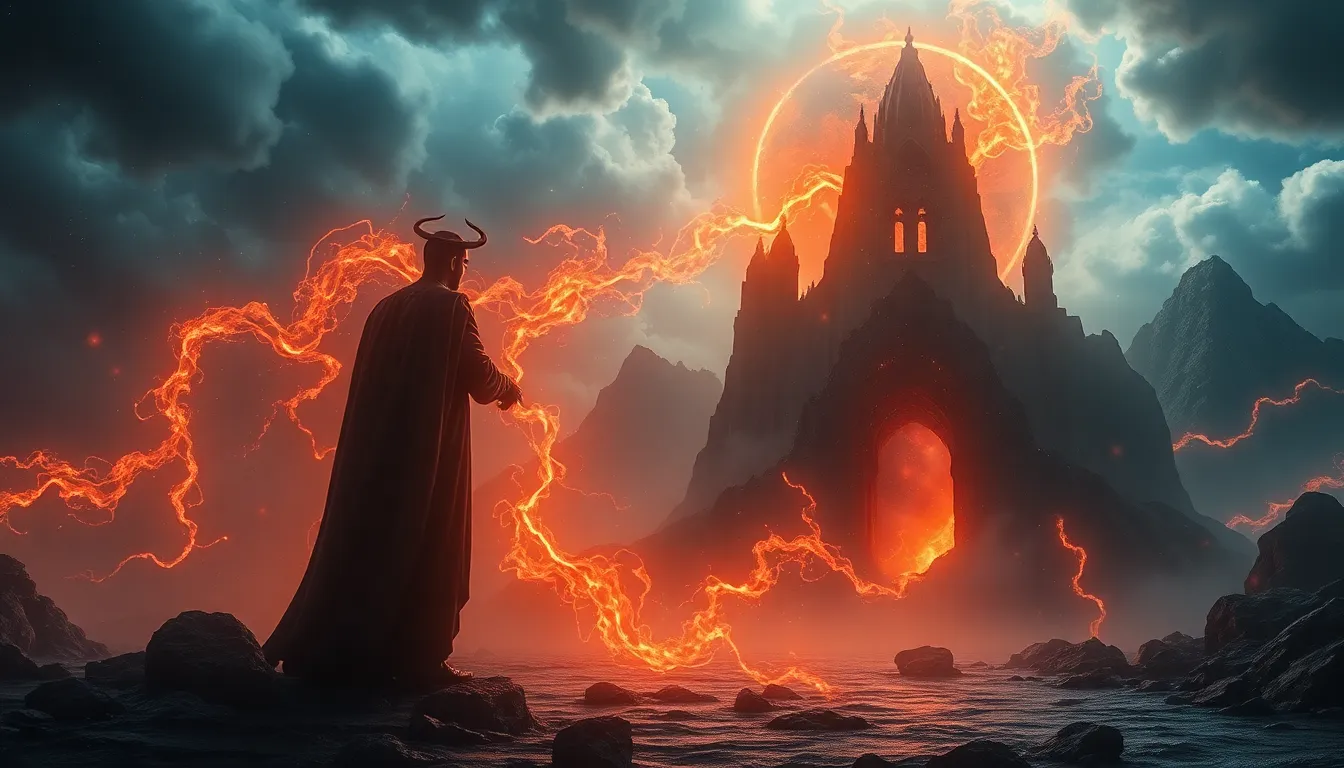The Science vs. Myths: What Happens When the World Ends?
1. Introduction: Understanding the Concept of World Endings
The phrase “world ending” evokes strong emotions and vivid imagery, often associated with catastrophic events that could lead to the collapse of civilization or the destruction of the planet. In a broad sense, it refers to scenarios that drastically alter life as we know it, whether through natural disasters, human actions, or cosmic phenomena.
Historically, the concept of world endings has played a significant role in various cultures. From the Mayan calendar predicting doom in 2012 to the biblical prophecies of the Book of Revelation, societies have grappled with the fear and fascination of potential apocalyptic events. These narratives serve not only as cautionary tales but also as reflections of human anxieties about existence and the future.
2. Scientific Perspectives on Global Catastrophes
Scientists have developed numerous theories regarding potential end-of-world scenarios. These theories often revolve around natural phenomena that could have catastrophic effects on life on Earth. Some of the most discussed scenarios include:
- Asteroid Impacts: Large asteroids hitting Earth could cause mass extinctions, similar to the event that is believed to have led to the demise of the dinosaurs.
- Supervolcanic Eruptions: Eruptions from supervolcanoes, like the Yellowstone Caldera, could release massive amounts of ash and gases, disrupting climate and agriculture.
- Gamma-Ray Bursts: These high-energy explosions in space could irradiate Earth and strip away its atmosphere.
While these scenarios are often seen as unlikely, they highlight the fragility of our planet and the potential for sudden, drastic changes.
3. Myths and Legends: Cultural Interpretations of the End Times
Across cultures, myths and legends have emerged that interpret the end of the world in various ways. These narratives often reflect the values, fears, and hopes of the societies that created them. Some notable examples include:
- The Norse Ragnarök: A series of events including a great battle, natural disasters, and the submersion of the world, culminating in the rebirth of the Earth.
- The Hindu Kali Yuga: The current age characterized by chaos and decline, followed by the eventual renewal of the world.
- The Christian Apocalypse: The Book of Revelation describes a final battle between good and evil, culminating in the establishment of a new heaven and earth.
These myths serve as powerful metaphors for human existence, illustrating the cyclical nature of life, death, and rebirth.
4. Climate Change: A Slow Burn Towards Global Catastrophe
One of the most pressing threats to global stability today is climate change. Unlike sudden catastrophic events, climate change represents a slow-burning crisis, gradually altering weather patterns, sea levels, and ecosystems. The scientific community has reached a consensus that human activities, particularly the burning of fossil fuels, are the primary drivers of this change.
Predictions about the long-term impacts of climate change are alarming:
- Increased frequency and intensity of natural disasters, such as hurricanes and wildfires.
- Rising sea levels threatening coastal communities and ecosystems.
- Food and water shortages due to altered agricultural conditions.
As the planet warms, the potential for global catastrophe increases, necessitating urgent action and adaptation strategies.
5. Nuclear Threats: The Immediate Danger of Human Conflict
The threat of nuclear war remains one of the most immediate dangers to human civilization. The proliferation of nuclear weapons and ongoing geopolitical tensions raise concerns about the potential for global destruction. Historical examples, such as the bombings of Hiroshima and Nagasaki, illustrate the devastating consequences of nuclear conflict.
Current geopolitical tensions, including those involving major powers like the United States, Russia, and North Korea, contribute to an environment of uncertainty. The potential for miscommunication, escalation, or accidental launch of nuclear weapons poses a significant risk to global peace.
6. Pandemics and Biological Threats: The Fragility of Human Existence
History has shown that pandemics can dramatically alter the course of human society. Events such as the Black Death and the 1918 influenza pandemic resulted in significant loss of life and profound societal changes. In recent years, the COVID-19 pandemic has illustrated the fragility of our global systems and the interconnectedness of our world.
Looking to the future, potential biological threats, including antibiotic-resistant bacteria and novel viruses, pose significant risks. The science behind these threats is complex, and preparedness is crucial to mitigating their impact.
7. Technological Risks: The Double-Edged Sword of Innovation
As technology advances, so do the risks associated with it. Innovations in artificial intelligence (AI) and biotechnology hold great promise but also introduce unforeseen consequences. Concerns about AI systems surpassing human control and the ethical implications of genetic engineering highlight the dual-edged nature of technological progress.
The debate continues over whether technology could lead to human extinction. Some experts caution against unregulated development, while others advocate for responsible innovation that prioritizes safety and ethics.
8. Myth-Busting: Debunking Common Misconceptions About the Apocalypse
Many misconceptions surround the concept of the apocalypse, often fueled by sensationalism and misinformation. Addressing these myths is crucial for fostering a well-informed public. Common misconceptions include:
- 2012 Mayan Apocalypse: The belief that the Mayan calendar predicted the end of the world was a misinterpretation.
- Zombie Apocalypse: While popular in media, a zombie apocalypse is purely fictional and not scientifically plausible.
- Global Warming as a Hoax: The overwhelming consensus among climate scientists is that climate change is real and significant.
By clarifying facts through scientific evidence and expert opinions, we can foster a more accurate understanding of global threats.
9. Preparing for the Future: What Can Be Done?
Mitigating potential global threats requires proactive strategies. Individuals, communities, and governments can take steps to prepare for future challenges:
- Education: Promote awareness of global issues and the importance of scientific literacy.
- Policy-Making: Advocate for policies that address climate change, nuclear disarmament, and public health.
- Community Preparedness: Encourage local initiatives for disaster preparedness and resilience-building.
By working together, we can create a more secure and sustainable future.
10. Conclusion: Balancing Science and Myth in Our Understanding of the End
The interplay between science and myth in our understanding of the end of the world is a profound and complex topic. While myths serve to express our fears and aspirations, it is essential to ground our understanding in scientific evidence. By distinguishing between myth and reality, we can foster a more informed perspective on global threats and the resilience required to navigate them.
As we face the uncertainties of the future, a proactive approach is crucial. Embracing education, fostering community engagement, and advocating for sound policies can help us build a more resilient world, capable of facing whatever challenges lie ahead.



